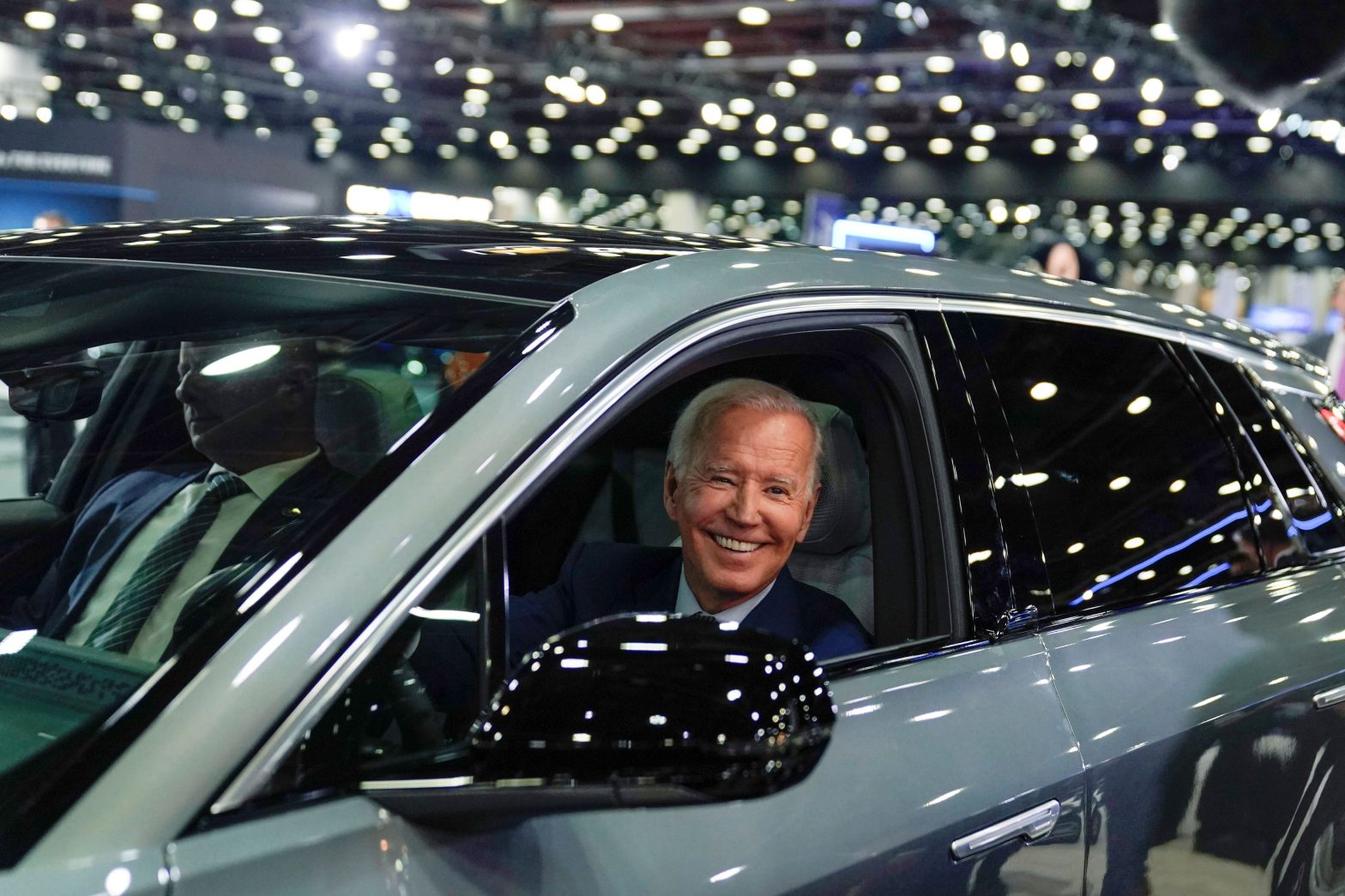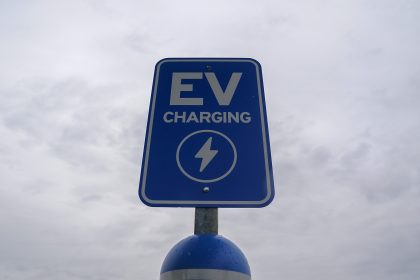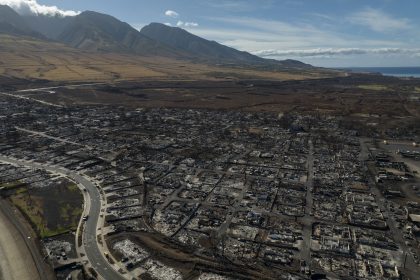White House Unveils Sweeping Rules to Speed Switch to Cleaner Cars

WASHINGTON — The Biden-Harris administration on Wednesday rolled out an ambitious new regulatory regime aimed at bolstering the standards of electric and hybrid vehicles by placing new restrictions on tailpipe emissions.
According to administration officials, who briefed reporters on the new rules during a conference call on Tuesday, the new requirements will ensure that the majority of passenger cars and light trucks sold in the United States by 2032 are either all-electric or hybrids.
“Three years ago, I set an ambitious target, that half of all new cars and trucks sold in 2030 would be zero-emission,” President Joe Biden said in a written statement, released while he was on a West Coast campaign swing.
“I brought together American automakers. I brought together American auto workers. Together, we’ve made historic progress,” Biden continued. “Hundreds of new expanded factories across the country. Hundreds of billions in private investment and thousands of good-paying union jobs.
“Today, we’re setting new pollution standards for cars and trucks. U.S. workers will lead the world on autos making clean cars and trucks, each stamped ‘Made in America.’ You have my word,” he said.
The new emissions standards currently being finalized by the Environmental Protection Agency will significantly reduce emissions of harmful air pollutants from light- and medium-duty vehicles starting with the 2027 model year.
Specifically, administration officials said, the final standards will significantly reduce emissions of greenhouse gases, hydrocarbons, nitrogen oxides and particulate matter from new passenger cars, light trucks and larger pickups and vans.
Once they’re ready, the agency will begin to phase them in over the 2027-2032 model years.
EPA projects that cumulative carbon dioxide reductions as a result of the new standards will be approximately 7.2 billion metric tons over the life of the program.
These include an estimated reduction of 87,000 tons of particulate matter, 36,000 tons of nitrogen oxides and 150,000 tons of volatile organic compounds.
The administration officials on the call said the cleaner vehicles will provide much-needed benefits to communities across the country, especially in communities near major roadways, where people of color and people with low income often live and are disproportionately exposed.
Officials estimated the air pollution reductions from the new standards will provide $13 billion in annual health benefits.
For light-duty vehicles, the standards are projected to result in an industry-wide average target for the light-duty fleet of 85 grams/mile of CO2 in MY 2032, representing a nearly 50% reduction in projected fleet average emissions target levels compared to the existing model year 2026 standards.
For medium-duty vehicles, EPA is revising the existing standards for MY 2027 and establishing new standards for MYs 2028-2032, given the increased feasibility of GHG emissions-reducing technologies in this time frame. These standards phase in over a six-year period from MY 2027 through MY 2032.
When fully phased in, the MDV standards are projected to result in an average target of 274 g/mile of CO2 by MY 2032, representing a 44% reduction in projected fleet average emissions target levels relative to the existing MY 2026 standards.
The EPA is also finalizing “Tier 4” criteria pollutant emissions standards for non-methane organic gases and other criteria pollutants and their precursors.
For light-duty vehicles, the EPA is finalizing non-methane organic gases that will phase down to a fleet average level of 15 milligrams per mile by MY 2032, representing a 50% reduction from the existing 30 mg/mi standards for MY 2025 established in the Tier 3 rule in 2014.
For MDVs, the EPA is finalizing NMOG+NOx standards that will require a fleet average level of 75 mg/mi by MY 2033, representing a 58%-70% reduction from the Tier 3 standards of 178 mg/mi for Class 2b vehicles and 247 mg/mi for Class 3 vehicles.
Though the vehicle technology costs associated with these changes are estimated to rise to about $40 billion in annualized value, administration officials said these costs will be more than offset by the annualized value of fuel savings ($46 billion) and repair and maintenance savings ($16 billion).
The EPA estimates that the standards will increase the per-vehicle technology costs to auto manufacturers by about $1,200 for light-duty vehicles and $1,400 for medium-duty vehicles over the six-year average from MY 2027 to 2032.
Administration officials said this estimate represents compliance costs to the industry and that it may not directly correlate to the price consumers pay when purchasing a new vehicle.
For example, they said, the price of such a purchase could be reduced by state and federal purchase incentives. Under the Inflation Reduction Act, consumers are eligible for up to $7,500 for the purchase of a new plug-in hybrid or full battery electric vehicle.
In addition, they suggested, consumers will benefit from significant savings on operating costs, including fuel, maintenance and repair savings over the life of vehicles that meet the standards.
They estimated this number will come in at about $6,000 over the life of a MY 2032 vehicle, compared to a vehicle meeting the 2026 standards.
They also stressed that the new, greener standards will have significant public health benefits.
Currently, the transportation sector is the largest U.S. source of greenhouse gas emissions, representing 29% of the nation’s total.
Within the transportation sector, light-duty vehicles are the largest contributor, at 58% of all transportation sources and nearly 17% of total U.S. greenhouse gas emissions.
The EPA estimated its new standards will cumulatively avoid 7.2 billion metric tons in carbon emissions, and nearly 200,000 tons of other pollutants known to have serious health effects and even cause premature death.
As a result, the agency said, the new rules would dramatically reduce hospital admissions due to respiratory and cardiovascular illnesses, non-fatal heart attacks, aggravated asthma and decreased lung function.
Annually, the net benefits to society for the light- and medium-duty final rule are estimated to be $99 billion.
In a statement circulated by the White House, National Climate Advisor Ali Zaidi focused on increasing customer choices when it comes to lower-emissions vehicles.
“From plug-in hybrids to fuel cells to fully electric, drivers have more choices today,” Zaidi said.
“Since 2021, sales of these vehicles have quadrupled and prices continue to come down. This growth means jobs, and it means we are moving faster and faster to take on the climate crisis,” he added.
Significantly, the administration received a thumbs-up today from the United Auto Workers, who said in a statement that the EPA had “come a long way to create a more feasible emissions rule.”
As the union sees it, the new regulatory regime will protect workers who are currently building or assembling gas-powered cars while enabling auto makers to methodically implement emission-reducing technologies.
As Biden asserted, the new emissions limits were nearly three years in the making.
During that time, the EPA said, it received “extensive feedback” from the public and stakeholders through written comments, testimony at public hearings and through other engagements.
“The final standards were informed by the best available data in the public record and rigorous technical assessments,” the agency said.
Among those applauding the administration’s efforts was John Bozzella, president and CEO of the Alliance for Automotive Innovation, an association based in Washington, D.C., that advocates for cleaner and safer cars and light-duty trucks.
“The future is electric,” Bozzella declared in a written statement.
“Automakers are committed to the EV transition — investing enormous amounts of capital and building cutting-edge battery electric vehicles, plug-in hybrids, traditional hybrids and fuel cell vehicles that drive efficiency and convert petroleum miles to electric miles. Consumers have tons of choices,” he said.
“But pace matters,” Bozzella continued. “Moderating the pace of EV adoption in 2027, 2028, 2029 and 2030 was the right call because it prioritizes more reasonable electrification targets in the next few (very critical) years of the EV transition.
“These adjusted EV targets — still a stretch goal — should give the market and supply chains a chance to catch up. It buys some time for more public charging to come online, and the industrial incentives and policies of the Inflation Reduction Act to do their thing,” he said.
Another supporter of the new rules was Ryan Gallentine, managing director at Advanced Energy United, a national business association of companies providing clean energy and transportation solutions.
“As we experience increasingly widespread adoption of technologically superior and increasingly popular electric vehicle models, these standards provide clarity and market certainty on the timeframe,” Gallentine said.
“Nearly every automaker sees that to keep up with changing consumer interests and global technology trends a quick switch to electric vehicles is in order,” he continued. “As many states raise the ceiling for what’s expected, these federal standards set an industry floor for that transition so that all consumers can have access to reliable, affordable, all-electric vehicles in the coming decade.”
Others, however, viewed the administration’s announcement as nothing short of a disaster.
Among these was the American Fuel & Petrochemical Manufacturers, which describes itself as “the trade organization representing the makers of the fuels that keep us moving.”
The AFPM has already started a seven-figure campaign against what it calls “Biden’s EPA car ban” in several swing states — Pennsylvania, Michigan, Wisconsin, Nevada and Arizona — as well as in Ohio, Montana and the nation’s capital.
To clarify, the new emissions rules are not a ban — they don’t force consumers to buy electric vehicles. Gas-powered cars and trucks — which make up more than 92% of the market today — will still be widely available.
But the onus will be on manufacturers to determine how their vehicles will comply with the new emissions standards.
In a joint statement, Chet Thompson, president and CEO of the AFPM, and Mike Sommers, of the American Petroleum Institute, said the new rules “will unequivocally eliminate most new gas cars and traditional hybrids from the U.S. market in less than a decade.”
“As much as the president and EPA claim to have ‘eased’ their approach, nothing could be further from the truth,” they said. “This regulation will make new gas-powered vehicles unavailable or prohibitively expensive for most Americans. For them, this wildly unpopular policy is going to feel and function like a ban.
“Whether you’re a Republican or Democrat, Congress has to make a decision whether to protect consumer choice, U.S. manufacturing workers and our hard-won energy security by overturning this deeply flawed regulation. Short of that, our organizations are certainly prepared to challenge it in court,” Sommers and Thompson said.
They may soon have more to be angry about. Within the next few weeks, the Department of Transportation is expected to finalize new emissions standards for heavy-duty vehicles such as buses and freight-carrying trucks.
Dan can be reached at [email protected] and @DanMcCue


























